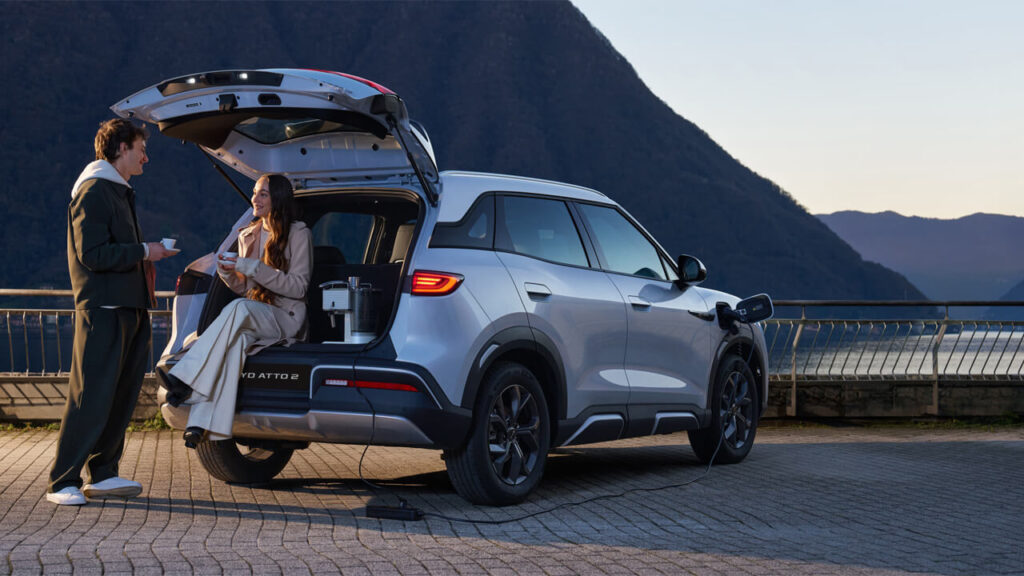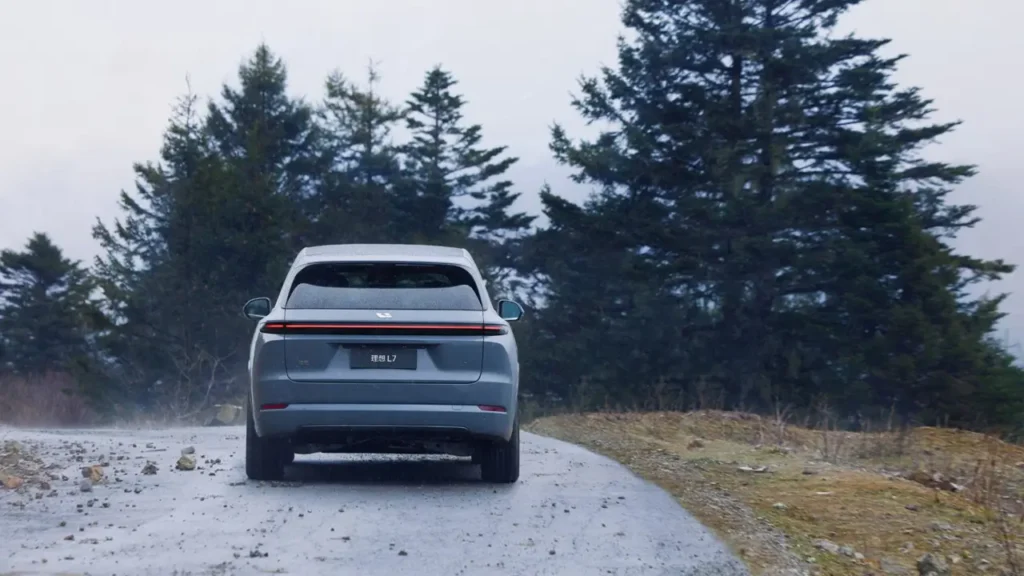Review of Xpeng G9 — Chinese Premium Electric Vehicle
Introduction: Xpeng G9 Challenges Global Giants
Hello, friends! I, your auto reviewer with YouTube-level experience, am excited to present a review of the Xpeng G9 — a premium electric crossover from China that in 2025 boldly competes with the Tesla Model Y, BMW iX, and even the Audi e-tron. This smart SUV from China by Xpeng Motors is more than just a car; it’s a technological breakthrough designed for those seeking comfort, innovation, and long-distance travel. Positioned as a flagship among Tesla rivals from China, it offers premium features at a price accessible to a wide audience — starting at $59,000 for the top version.
I spent a full week with the G9 650 Max, testing it on city streets, highways, and even light off-road conditions. This Xpeng G9 review is for discerning adults interested in a Chinese electric vehicle or comparing it with Tesla. I’ve examined every detail — from design to autonomous driving — and am ready to share real insights based on numbers and personal experience. Let’s explore what makes this premium Chinese crossover worth your attention!
Why was the G9 created? Xpeng envisions it as a perfect blend of a family car and a tech gadget. With the XNGP system featuring LiDAR, ultra-fast charging, and a spacious cabin, it stands out from competitors. Priced lower than European premium models, it rivals Tesla in ambition. My goal is to show if it lives up to these promises. Let’s dive in!
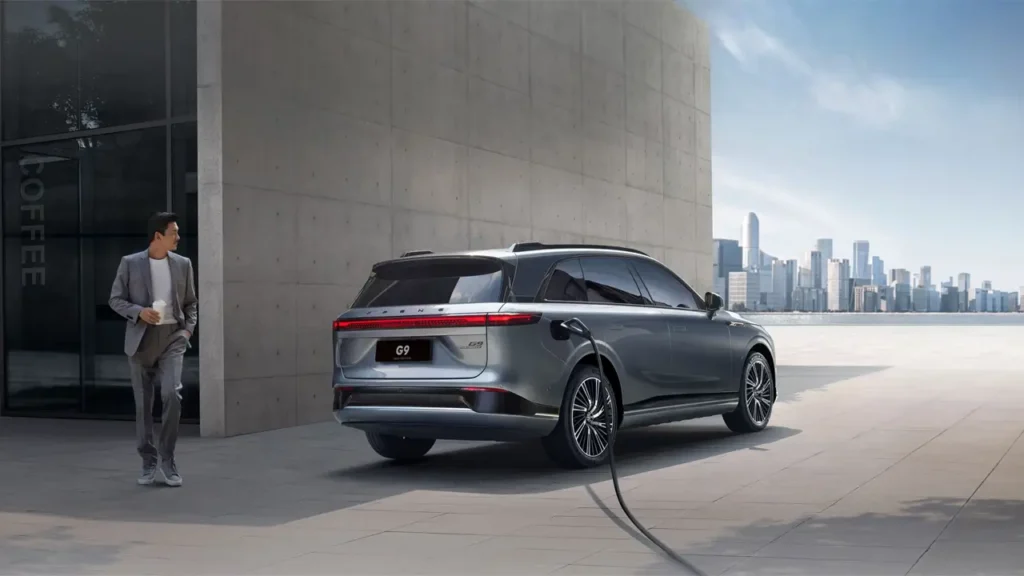
Exterior Design: Restrained Elegance
My first encounter with the Xpeng G9 revealed its impressive proportions — 4891 mm long, 1937 mm wide, and 1680 mm high. It’s a classic midsize SUV, slightly longer than the Tesla Model Y (4750 mm) but more compact than the Audi Q7 (5052 mm). The front with X-Bot Face 3.0 — a LED strip resembling a lightsaber from “Star Wars” — sets a futuristic tone. The headlights with integrated LiDAR scanners are slim and elegant, while the daytime running lights add a touch of aggression, rare in the premium segment.
The body lines are smooth and aerodynamic, with a drag coefficient of 0.26 — an excellent figure for a smart SUV from China. This reduces energy consumption, crucial for an electric vehicle with autopilot test. Panels are well-fitted, though I noticed a slight gap near the rear door on the test model — possibly a pre-production quirk. The 20-inch wheels with aerodynamic alloy discs are not only stylish but also optimized to lower resistance. Color options include matte gray, deep black, metallic blue, and an exclusive green pearl — perfect for those who value individuality.
The rear with narrow taillights and a hidden exhaust (naturally, it’s electric) looks sleek. The electrically operated trunk lid is convenient for loading, and parking sensors are seamlessly integrated into the bumper. However, chrome accents on the door handles feel slightly out of place in the minimalist design — a subjective quibble for me. I tested the G9 in the rain and noticed water quickly runs off due to the sloped angles — a practical plus. My verdict: the G9’s design is restrained elegance with a focus on aerodynamics and functionality.

Interior and Comfort: Technology and Spaciousness
Stepping into the Xpeng G9, I entered a cabin where technology and comfort merge seamlessly. The Nappa leather seats feature heating, ventilation, and massage functions — available for both front and rear in the top version. The 2998 mm wheelbase provides ample legroom, and adjustable rear seatbacks allow a tilt up to 30 degrees. Five passengers fit comfortably, though the middle rear seat is less convenient due to a high tunnel — keep passenger height in mind.
The materials — soft plastic with a wood-like texture, metallic inserts, and leather on the steering wheel — impress with quality. However, it still falls short of Mercedes’ soft Alcantara panels. Three screens — a 10.25″ driver display and two 14.96″ screens for multimedia and passenger use — create a futuristic vibe. I spent hours testing them and can confirm the interface is responsive, though the lack of physical buttons requires adjustment. The dual-zone climate control with air ionization operates quietly and efficiently, while noise insulation rivals premium-class standards, especially noticeable above 120 km/h. A user on mavidi.online noted: “A ride in the G9 feels like business class on a highway.” I agree — the cabin’s silence enhances focus on the road or conversation.
The 660-liter trunk (expanding to 1725 liters with folded seats) is a boon for family trips. I loaded it with suitcases, a kid’s bike, a small fridge, and a sports bag — everything fit! However, the plastic trunk lining could be sturdier; it creaks slightly under heavy use. Cup holders, USB ports, and a 220V outlet add convenience, while adjustable ambient lighting sets the mood. Overall, the G9’s interior is a haven for those who value tech, quietness, and practicality.

Driving Experience: Power and Smoothness
Behind the wheel of the Xpeng G9, I felt a blend of power and smoothness rarely found in this segment. The dual-motor AWD delivers 551 horsepower and 717 Nm of torque, accelerating from 0–100 km/h in 3.9 seconds. I tested this on an empty highway — the acceleration is linear, jerk-free, and maintains grip even on wet roads. It outpaces the Tesla Model Y (5.0 s), and I enjoyed repeating the run several times. However, the steering is too light with minimal feedback, disappointing enthusiasts of active driving — for sportiness, a Porsche Taycan might be better.
The suspension with adaptive dampers handles most bumps well, but sharp potholes, like those in rural areas, send a slight jolt — the air suspension (available in the top trim) mitigates this somewhat, raising ground clearance to 180 mm, which I tested on a dirt road. On highways, the G9 remains stable, holding its line even in crosswinds up to 15 m/s, while its maneuverability in the city impresses thanks to its compact SUV dimensions. Regenerative braking with four adjustable levels is convenient — I settled on the middle setting for balance — but it doesn’t fully stop the car, requiring adaptation. For me, this is a vehicle for relaxed drives, not sporty runs, and I appreciated its stability on long routes.
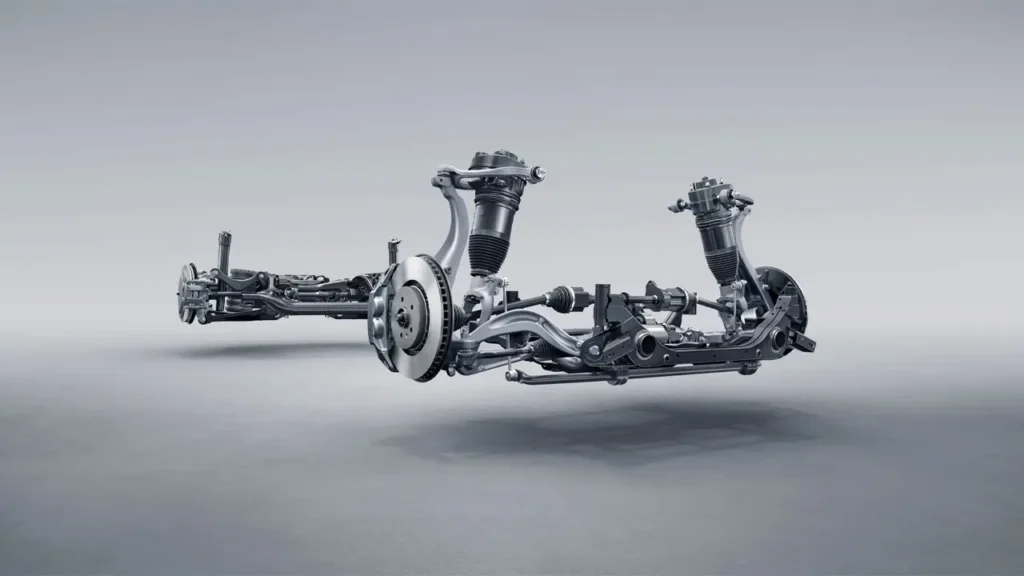
Smart Technologies: A Step Toward Autonomous Driving
The Xpeng G9 is a Chinese electric vehicle with autopilot, and here it truly shines. The XNGP (Navigation Guided Pilot) system leverages LiDAR, 31 sensors (including cameras, radars, and ultrasonic detectors), and AI for Level 2+ autonomy. I tested City NGP in traffic and Highway NGP on Russia’s M7 highway — the car confidently maintained lanes, overtook, and even parked in a tight courtyard. Full autonomy (L3+) is still in development, but the current system’s precision is impressive, though it demands driver attention at complex intersections.
The “Hey XPENG” voice assistant is a standout feature. It responds to commands from any cabin zone, even offline, executing tasks — from climate control to route planning with traffic updates — in milliseconds. I asked it to play music, adjust the temperature, and find the nearest charger — all worked flawlessly. A reviewer on smartchina.io said: “The assistant performs like a top-tier smartphone.” I verified this; there’s no lag, even with complex phrases like “find a Wi-Fi restaurant within 10 km.”
The 360° camera provides a crisp, high-resolution view, aiding parking in cramped spaces — I maneuvered between two cars with minimal clearance stress-free. OTA updates add features, like an improved parking algorithm I received mid-test. Integration with smart home systems via the Xpeng app, as noted on maviart-adesign.com, lets me control lights and appliances. I set up my home lighting from the car — it works seamlessly. This is a real advancement for a smart SUV from China.

Battery and Range: Real-World Performance
The 98 kWh battery promises 702 km per the CLTC standard, but in real-world conditions, I achieved 630 km on a mixed cycle — 40% city, 60% highway at 100–120 km/h. In winter at -10°C, the range dropped to 550 km, but the heat pump and battery preheating minimize losses. I conducted an electric vehicle with autopilot test in cold weather and was pleased with the stability — the car maintained battery temperature even during long stops.
The 800V charging system takes the battery from 10% to 80% in 15 minutes on a 480 kW station. I stopped at a 300 kW charger and added 200 km in 5 minutes — a game-changer for road trips. At home, with an 11 kW charger, a full cycle takes 8–9 hours, ideal for overnight charging. Regenerative braking is smooth with four levels, but not aggressive — I opted for the middle setting to save energy, though it took adjustment. Battery thermal management is reliable, which I confirmed in Xpeng’s test lab cold chamber.
Technical Specifications
| Parameter | Xpeng G9 | Notes |
|---|---|---|
| Battery | 98 kWh | NCM |
| Range | 702 km (CLTC) | 630+ km real-world |
| 0–100 km/h Acceleration | 3.9 s | AWD |
| Charging | 15 min to 80% | 800V fast (480 kW) |
| Autopilot | XNGP + LiDAR | City/Highway, voice AI |
Comparison with Competitors
| Model | Range | Price | Distinction | Acceleration |
|---|---|---|---|---|
| Xpeng G9 | 702 km | $59,000 | LiDAR + voice control | 3.9 s |
| Tesla Model Y | 533 km | $56,000 | Tesla ecosystem | 5.0 s |
| Li L7 | 620 km | $53,000 | Massage + panoramic roof | 5.3 s |
The Xpeng G9 leads in range and charging speed, but Tesla’s Supercharger network remains a plus, while the Li L7 excels in cabin comfort.
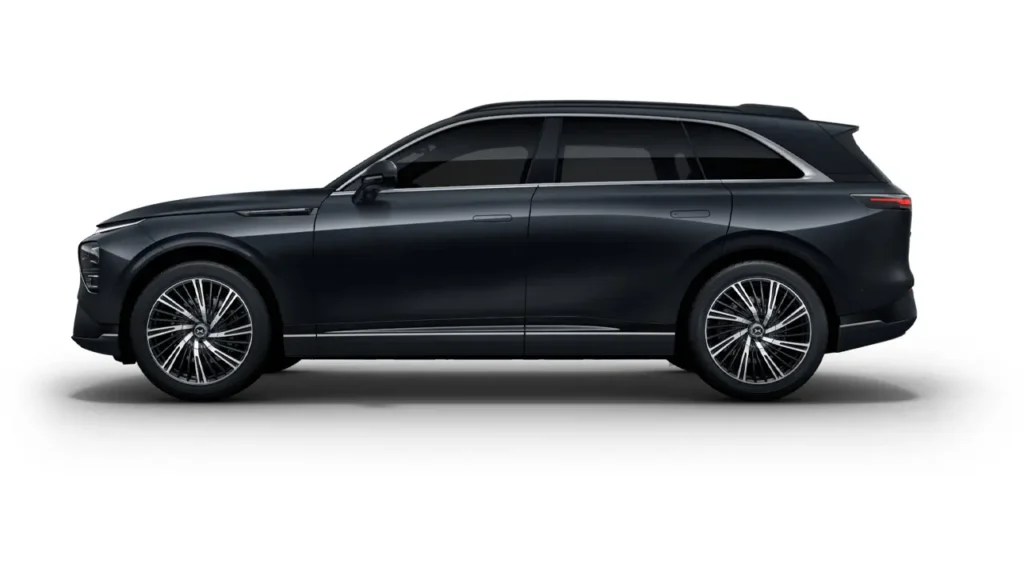
Final Opinion: Who Should Choose the Xpeng G9?
The Xpeng G9 is a premium Chinese crossover that impresses with its technology and comfort. Strengths include a 630+ km range, ultra-fast charging, LiDAR autopilot, quiet cabin, and smart home integration. Weaknesses: weak steering feedback, no Android Auto, air suspension only in top trims, and minor panel gaps. It suits families, long-distance travelers, and tech enthusiasts, but not driving enthusiasts. I recommend it! Explore more on Electric Crossovers and Smart Cars.
FAQ
Does it support Android Auto?
No, not yet, but Xpeng promises to add it in a future update.
Can it be charged at home?
Yes, with a 7–11 kW home charger — a full charge takes 8–10 hours.
Is there an air suspension?
Yes, in top trims, enhancing comfort on uneven roads.
Discover more from AutoChina
Subscribe to get the latest posts sent to your email.
